Maintaining a debt-free lifestyle is a commendable goal that can provide you with financial freedom and peace of mind. Here are seven steps to help you achieve and sustain a debt-free lifestyle:
- Set clear financial goals
- Create a budget
- Build an emergency fund
- Live below your means
- Avoid unnecessary debt
- Pay off existing debts
- Maintain financial discipline
Get Started Now!


Learn 7 steps to maintain a debt-free lifestyle, whether you’ve never been in consumer debt or just paid off your debts. This is a step-by-step guide to avoiding debt and achieving your goals like a pro.
- Set clear financial goals: Start by defining your financial objectives and what you hope to achieve by living debt-free. Whether it’s saving for a down payment on a house, starting a business, or building an emergency fund, having specific goals will give you direction and motivation.
- Create a budget: A budget is an essential tool for managing your finances effectively. Calculate your income and track your expenses to get a clear picture of where your money is going. Make sure to allocate a portion of your income for savings, debt repayment (if applicable), and necessary expenses. Stick to your budget and avoid unnecessary spending.
- Build an emergency fund: Establishing an emergency fund is crucial for avoiding debt in unexpected situations. Aim to save three to six months’ worth of living expenses in a separate account. This fund will serve as a financial safety net and help you avoid relying on credit cards or loans during emergencies.
- Live below your means: It’s important to spend less than you earn to avoid falling into debt. Practice frugality by distinguishing between needs and wants. Prioritize essential expenses and limit discretionary spending. By living below your means, you’ll have more money available for savings and debt repayment.
- Avoid unnecessary debt: Be cautious when taking on new debt. Differentiate between good debt (such as a mortgage or student loans) and bad debt (such as high-interest credit card debt for unnecessary purchases). Minimize the use of credit cards and only borrow money when it’s necessary and within your means to repay.
- Pay off existing debts: If you have existing debts, develop a plan to pay them off systematically. Start by paying off high-interest debts first while making minimum payments on others. Use any extra income or savings to accelerate your debt repayment. Consider strategies like the debt snowball method (paying off debts from smallest to largest) or the debt avalanche method (paying off debts from highest to lowest interest rates) to stay motivated and efficient.
- Maintain financial discipline: Consistency is key to maintaining a debt-free lifestyle. Stay committed to your financial goals and adhere to your budget. Avoid impulsive purchases, practice mindful spending, and continually evaluate your financial decisions. Regularly review your progress and adjust when necessary to ensure you’re on track to achieving your goals.
Remember, maintaining a debt-free lifestyle requires dedication and perseverance. It may take time to pay off existing debts and establish healthy financial habits, but the long-term benefits are worth it. Stay focused, be patient, and celebrate your achievements along the way.







